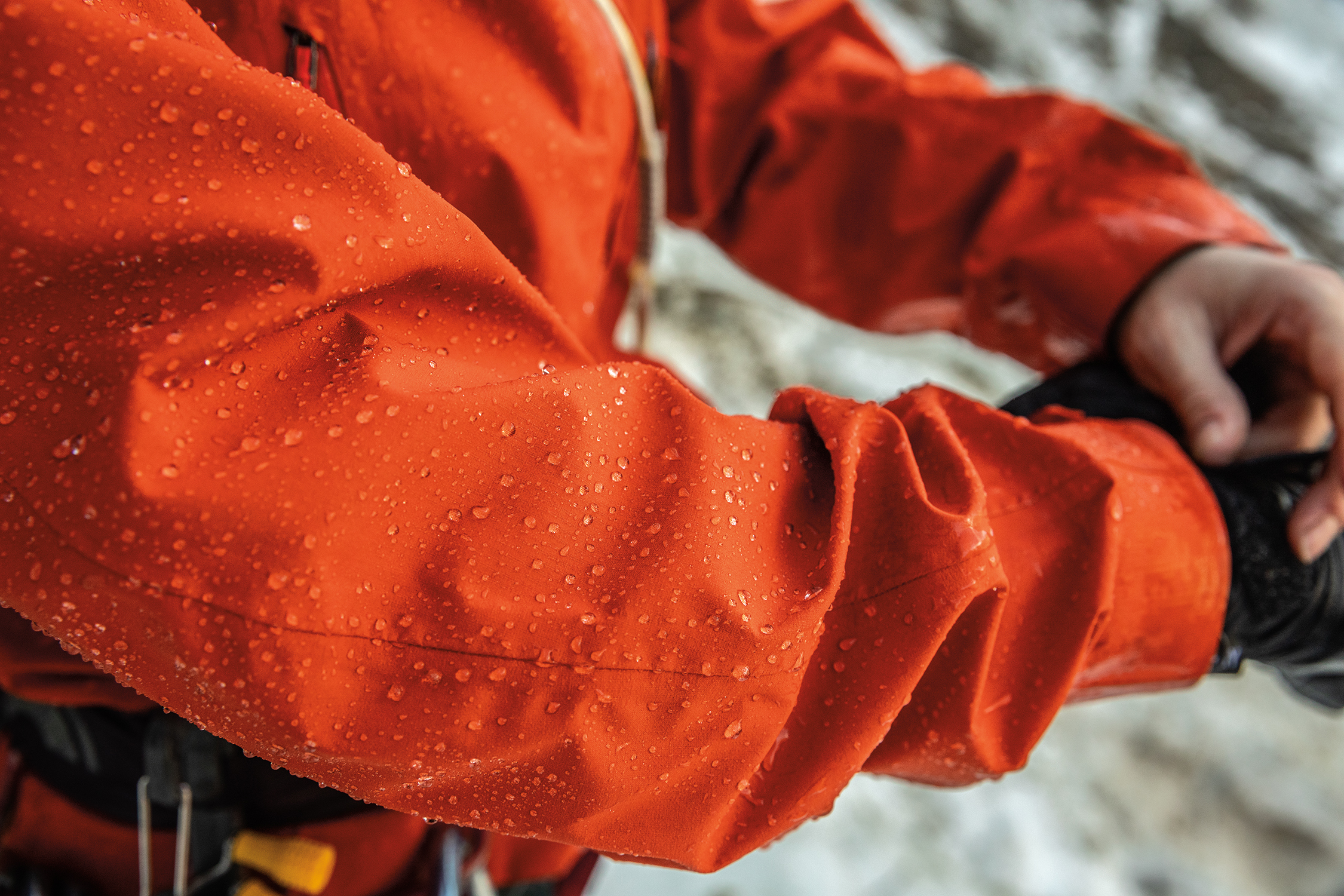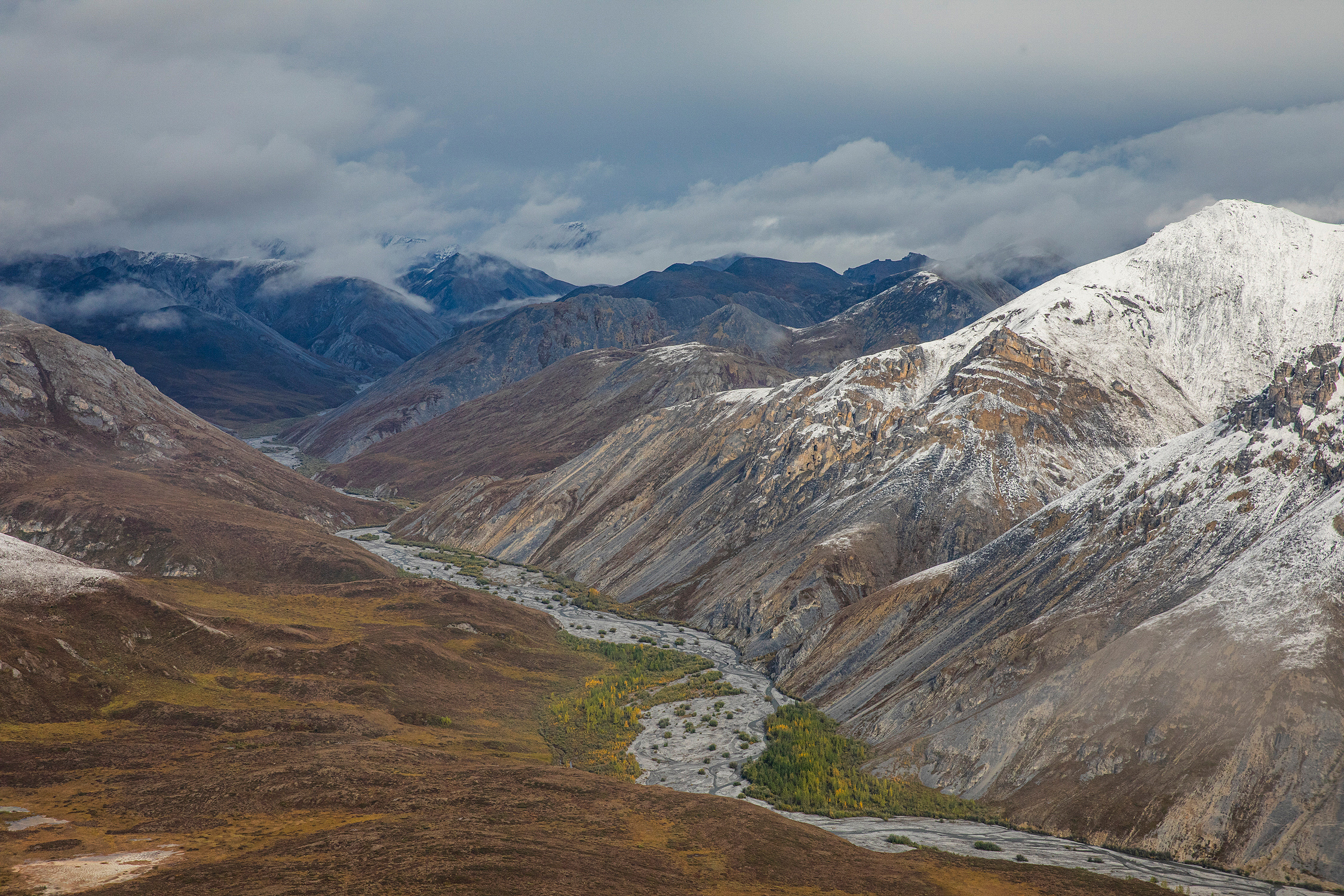At the edge of impact:
A Conversation with
Patagonia’s Gin Ando
On truth, tension, and why communication matters in the climate fight.
WORDS BY BACKGROUND
PHOTOS COURTESY OF PATAGONIA

In the vast and noisy landscape of brand communications, Patagonia has long stood out — not for shouting louder, but for saying something real. We spoke with Gin Ando, from Patagonia’s media and public relations team, about the power of storytelling, the burden of responsibility, and the real-world stakes of the work. From the inside out, he gave us a rare glimpse into what it means to shape a brand that constantly questions itself — and still fights every day to protect the planet.
Background Magazine: Gin, to kick things off — how did you first arrive at this role? What drew you to communications in a company like Patagonia?
Gin Ando: I actually started in customer experience — if you were in North America and called the 1-800 number in the fall of 2021, there’s a chance I answered. I’d worked retail in the outdoor space, and I always respected Patagonia, so when the opportunity came up to work remotely for a company I admired, I jumped. The brand philosophy, the films, the stories — they all resonated with me. As someone who spends a lot of time outside, I started to realize that loving a place means wanting to protect it and Patagonia was doing the work to do that. I have a strange professional past — marketing, newspapers, freelance writing — and it all lined up when an internal internship opened in the communications team. I took it. That six-month internship turned into a full-time role. These days, I do a lot of writing — speechwriting for company leadership, helping prepare for keynotes, panels, and internal moments. I get to work with people like Yvon, Ryan, and Jenna. It’s storytelling in service of something bigger, and I honestly wouldn’t trade it for anything.
Background Magazine: Communication is obviously core at Patagonia. How does it operate within the company’s bigger mission?
Gin Ando: Our communication has always been rooted in story. From the very beginning, Yvon had this idea that a business could be more than just something that makes money. We sell gear, yes — but the real purpose has always been to show that business can be done differently. Ryan, our CEO, often says the legacy isn’t just in the environmental work, but in modeling a responsible way to exist as a business. And part of that means telling the harder stories — not just the glossy ones. We have entire teams dedicated to looking after the wellbeing of workers in our supply chain. We don’t own factories, but the responsibility still feels personal. We’ve made mistakes too — like when we uncovered migrant worker exploitation in Taiwan. That came from our own investigation. And we went public with it — not to point fingers, but because we were implicated too. Communication plays a role here by saying: this is hard, but we still have to try.

Background Magazine: Patagonia is a company that needs to sell products to survive — and yet, it consistently asks people to buy less, to repair what they have, and to consume more consciously. How do you navigate that tension?
Gin Ando: That tension is very real. But what makes it work is that the philosophy behind it is legitimate. Otherwise, my job would just be covering up a lie — and I couldn’t do that. Everyone here, from Yvon to the product designers, talks about that tension. It’s not hidden. Our answer has always been: quality. If you need something, make sure it’s good — and ideally, built to last, be repaired, or even recycled. Take our Baggies shorts, for example. Same design since 1982, but now they’re made with recycled nylon, including netting from derelict fishing gear collected by the Bureo program. That’s a real shift in quality. Our Yulex wetsuits are another example — made from natural rubber and now we have an end-of-life solution to turn it into carbon black, which we reuse in products like the Black Hole duffel. So even when we make something new, it’s with long-term responsibility in mind.
Background Magazine: And yet, we see Patagonia everywhere now — city offices, cafés, people who might never hike. Are these urban professionals part of who you design and communicate for?
Gin Ando: We don’t target them directly. The core remains technical: alpinism, trail running, fishing, climbing. But quality materials and design can flow across categories. A jacket built for a climb might work in the city. That’s by design. We don’t chase trends — in fact, we recently ran a Black Friday campaign called "Unfashionable" to remind people of that. Still, if someone in a co-working space wears our gear because it aligns with their values — conservation, responsible business, fairness — that’s a win. We don’t exclude anyone unless they’re actively working against what we stand for.
Background Magazine: Patagonia was founded over 50 years ago on values that challenged the status quo. Are those original values still at the heart of the company today?
Gin Ando: Absolutely. From Yvon’s early stance on “clean climbing” — where we stopped selling pitons even though they made up 70% of Chouinard Equipment´s business — to switching from conventional to organic cotton in the '90s because of its health impact, it's always been about responsibility. Now, it’s not just culture — it’s our legal obligation. The Patagonia Purpose Trust exists to ensure that those values continue. And they’ve filtered into every department. “Let My People Go Surfing” isn’t just a slogan — it manifests differently across teams, but the philosophy is alive. And when a decision feels hard, that philosophy makes it clearer which direction to go.
“That tension is very real. But what makes it work is that the philosophy behind it is legitimate. ”
Background Magazine: When you look ahead — what does the future look like? Where is Patagonia going next?
Gin Ando: Our biggest challenge is decarbonizing our supply chain, which is where over 90% of our emissions come from. That’s deep — Tier 3, Tier 2 — and most companies don’t even measure it. But we’ve mapped it. And now the goal is to reduce emissions, not just offset them. We're also phased out intentionally added PFAS — “forever chemicals” from our products. In the U.S., new laws in New York and California accelerated that shift. Our collaboration with Gore-Tex has led to the launch of a Gore-Tex ePE, which is free from intentionally added PFAS, and we will be seeing Gore-Tex-Pro shells later this year — a major milestone. Alongside that, we're continuing to increase our use of recycled materials and designing products with real end-of-life solutions. At the same time, we’re watching political threats to public lands in the U.S. very closely. Our advocacy work, our grants, our partnerships — they’re all ramping up. The next 50 years will be harder than the first. But that’s the path we’ve chosen.

Background Magazine: Finally, what message would you like to leave with readers of this piece?
Gin Ando: There's a quote from Edward Abbey that I keep close: "Be a part-time crusader, and a half-hearted fanatic. Save the other half of yourselves and your lives for pleasure and adventure.” Rick Ridgeway, an incredible mountaineer and former Patagonia employee who shaped our environmental work said — also said something that really stuck with me: You often have to get out there and love a place before you want to protect it.
So my message is: get out there. Go outside. Have fun. Feel something real. The fight to protect these places gets heavy. But joy is part of the work too. And once you’ve felt that connection — really felt it — you’ll understand what’s at stake. You’ll be ready to join the fight.
Twice a month. A message from our hearts.
Sign up for updates on outdoors, adventure, climate and sustainability.


.jpg)
